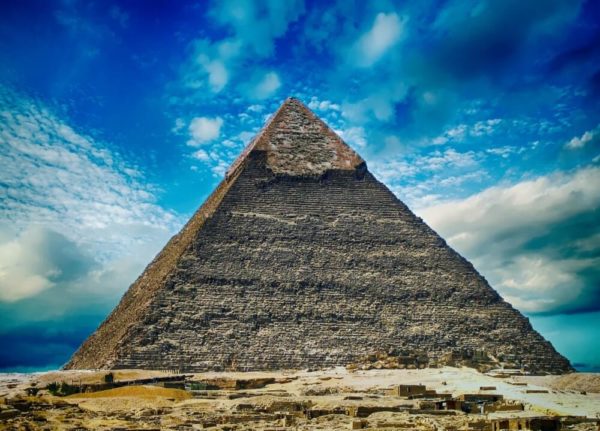The curious facts of the Egyptian pyramids are derived from the mysteries that revolve around them. In addition to its imposing architecture. New details and secrets of these are constantly being found. Thanks to their popularity, many are fascinated by these mega structures, but there are those who are unaware of many curiosities about these pyramids. For this reason, below, we will tell you some curious and fascinating facts about one of the wonders of the ancient world.

What are the fun facts about the pyramids?
Not all of them were pointed
Pyramids are not all the same and the former were not the pointed structures we usually think of, but were actually flat. Such as those found in the Saqqara necropolis located in Memphis, the capital of ancient Egypt.
Here are some of the oldest pyramids in the world and include the Pyramid of Djoser: designed by the architect Imhotep, this pyramid was built during the third dynasty between 2630 and 2611 BC. The Pyramid of Djoser is one of the first monuments made with carved masonry and, in fact, it is not pointed.
The pyramids of Giza and the constellation of Orion
The pyramids are closely related to astrology. That is why one of the curious facts about the Egyptian pyramids is that they relate to the constellation of Orion. This can be observed in its maximum splendour with the arrival of winter. These three stars known as the Three Wise Men or Orion’s belt, are said to be perfectly aligned with the three great pyramids of Giza.
This curious relationship could be due to an Egyptian belief. According to this, after death the gates of heaven were opened in the place where Orion’s belt is located.
Climbing the pyramids can land you in jail
Climbing the stones of the pyramids is a prohibited practice. This, in addition to being very dangerous, can lead to a penalty of 3 years in prison. This measure was established to avoid the wear and tear this could cause on the pyramids if visitors were allowed to do so. For this reason, the authorities have been forced to impose prison sanctions on those who do not comply with the measure.
They were not built by slaves
This other curious fact about the Egyptian pyramids that demolishes the theory that they were built by slaves. In the 90s, tombs of pyramid builders were discovered. Egyptologists are almost certain that they were not slaves, but builders who came from lower-class families.
The fact that they have been buried in a tomb suggests that participating in the construction of the pyramids was an honour, so this important work would never have been entrusted to a slave.
The great pyramid of Giza tells the time
The Great Pyramid of Giza is not only the most famous Egyptian pyramid. It is also the only one of the Seven Wonders of the Ancient World that survives to this day. One of the most interesting features of this incredible monument is that it can also tell the time. The structure acts like a giant sundial. With its shadow it indicates the time when it falls on marks made in stone.
The most fascinating thing is that this pyramid does not just tell the time. Thanks to its high level of sophistication, it was able to mark solstices and equinoxes and therefore helped the Egyptians to define the solar year.
Some wanted to destroy them
This is one of the curious facts about the pyramids of Egypt that few imagine happened. The Egyptian Sultan Al-Aziz Uthman considered the pyramids an offense to his religion. He came to destroy the smallest and the medium ones. Upon reaching Menkaure’s, he only left a strip in the middle. When he tried to face the greatest of all, he had to surrender to powerful Egyptian engineering.
They are not in the middle of the desert
Most visitors have the idea that the pyramids are in the middle of the desert, behind some oasis that can only be reached by camels. But the truth is that they are very close to the buildings of Giza.
The road reaches a few meters from the Sphinx, which until the last century was covered with sand and perhaps therefore protected. Before beyond the pyramids there was not much more than desert, now there are also many houses and streets built behind the pyramids. Which suggests that in the end the pyramids will all be surrounded.
The first architect of the pyramids
The first known architect of the pyramids was Imhotep, who was also considered a god in his time, being, in addition to being an architect, astronomer, doctor, and administrator.
He is responsible for the construction of the first pyramid in Egypt, the step pyramid of Saqqara, considered the first monument built in stone by man.
He was considered the patron saint of scribes who poured drops of wine in his honour before doing any work, and he is also credited with numerous miraculous cures. In the different sculptures and paintings made in his honour, he is represented with his head shaved, seated and carrying a papyrus in his hand.





ALFA